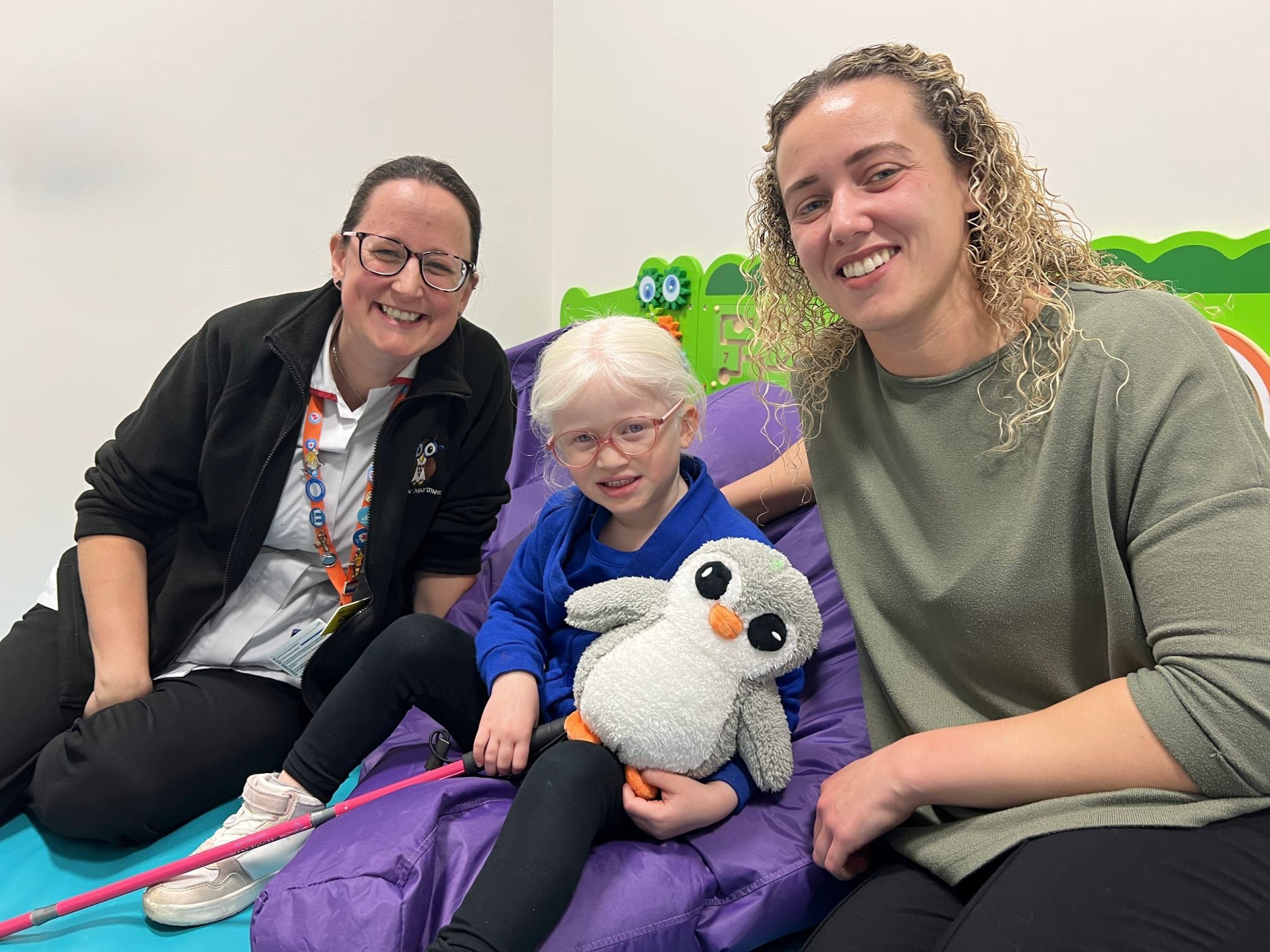“She Sees the World Her Own Way": UHNM nurse’s plea to end stigma around daughter’s rare condition
A University Hospitals of North Midlands (UHNM) nurse and mum is using World Sight Day (9 October) to raise awareness of albinism and challenge the stigma surrounding the condition.
Kimberly Perickathara’s daughter Maya, 4, was born with oculocutaneous albinism, a rare genetic condition which affects the hair skin and eyes.
Inspired by Maya, Kimberley, a tobacco dependency lead nurse from Newcastle-under-Lyme, is calling for increased awareness and support of the condition which affects one in 17,000 people in the UK.
Kimberly, who is also mum to nine-year-old son Arlo, said: “Maya’s condition impacts the production of melanin, the pigment that colours hair, skin and eyes and often results in significant visual impairment.
“Maya was born with no pigmentation in her eyes and has nystagmus, an involuntary eye movement that affects around 92 per cent of people with albinism. She also has no 3D perception meaning steps and uneven surfaces appear flat to her
“From a very young age Maya’s found her own ways to adapt. When she was learning to walk she would use her hands to feel for steps or changes in flooring. She’s incredibly independent, bright and funny, she knows no difference because this is her normal.
Maya, who is under the care of UHNM’s ophthalmology and dermatology teams also receives specialist support at school from the local visual impairment service.
Kimberly said: “She uses braille, large print and different textures, and works with a habilitation officer to build her cane skills and independence. She loves school and has lots of friends.
“She enjoys painting, colouring, swimming and riding her scooter. Her favourite food is spaghetti- she’s just like any other four-year-old.”
Because bright light and glare can make it difficult for Maya to see, she wears dark prescription sunglasses and a low-peaked cap outdoors, even in winter.
Kimberly said: “We have to carefully plan days out around shaded areas and take precautions to protect her skin using factor 50 sunscreen and UV-protective clothing. There’s no cure for oculocutaneous albinism and we have to protect her vision as much as possible.”
Kimberly says one of the biggest challenges has been public misunderstanding of the condition.
She said: “Even when Maya was a baby in her pram, people would stop and stare or use the wrong language, which can be hurtful. Albinism isn’t just about appearance, it affects vision too, and people need to understand that support and awareness make a real difference.”
Claire Carrick, Head of Orthoptics and Refractive Optometry at UHNM said: “Maya has been under our care since birth and we’re now working with Kimberly and the local visual impairment team to ensure Maya are getting all the help she can get and her schooling is a good as it should be and is she able to work alongside her peers and keeping up with work and learning to her age range.”
Kimberly added: “We’ve had to learn a lot as a family, but we’re so proud of Maya and everything she’s achieving. She’s teaching us, and others, that visual impairment doesn’t have to be a barrier to living a full and happy life. With the right understanding and support, people with albinism and visual impairment can live full, independent lives , it shouldn’t define or limit them.”

